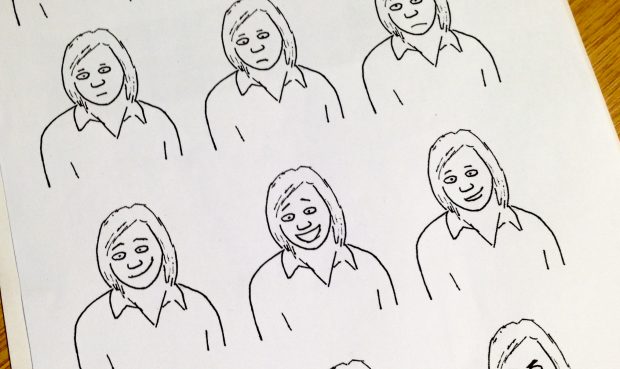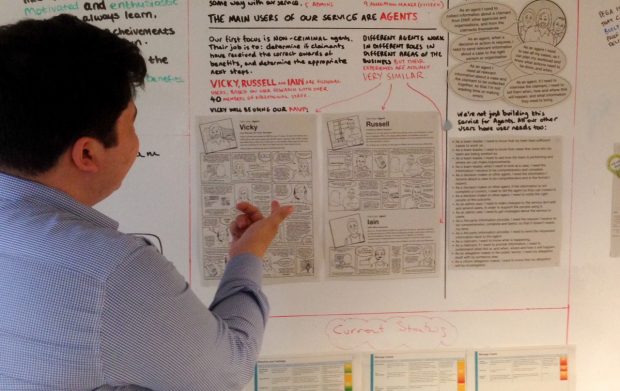I’m Tom Adams, the user researcher on a service to support DWP’s Fraud and Error staff.

Our service will have around 5,000 users spread around the country, investigating error and fraud in benefit claims. This could be a couple of pounds a week error in Universal Credit, up to complex organised crimes like modern slavery. We know that our colleagues need a better set of tools to support them, and that’s what our project will deliver.
My job is to make sure the team understands and empathises with our users. Generally, user researchers use tools like personas and customer journey maps to do this. But for this project I experimented with something different: ‘day in the life’ cartoon strips showing our key users.
Trying a different approach
Sometimes, personas and journey maps don’t effectively describe users with complex, non-linear needs. Our users are extremely busy juggling multiple cases in a single day. Each case involves a lot of evidence gathering, interviews with claimants and often complex decisions. Unlike most citizen-facing services, there’s no single, clear customer journey that they take; their days are unpredictable.
I wanted an approach that would do two things:
- Show how complex, and busy our users’ working days are (and so where our service can help them)
- Do this in an engaging way, to really help my team understand, care about and remember our users throughout the project.
I decided to use a visual storytelling technique, creating ‘day in the life’ cartoons of three of our users. They show what they do throughout the day, the difficulties they face, what they enjoy and what frustrates them.
Making the cartoons
As with a persona or journey map, the cartoons are based on lots of research from lots of users. Everything shown and said is based on real observations and quotes from users.
The first cartoon took a few days to complete, the others a little less. I started by storyboarding them using sticky notes and stick men, then I put them together using Pages on the Mac.

I’m not an artist, so drawing the cartoons wasn’t easy. I traced photographs, I reused artwork wherever possible, and I experimented (a lot!) with facial expressions. I also spent time studying comic book layout conventions, and used a free cartoon typeface for the lettering. If we’d been lucky enough to have a secret or budding artist on the team this would have been much quicker!
Choose the right tool for the job
Have the cartoons worked as intended? Yes, I think so. The team loved them and asked loads of questions. They’re pinned to the wall, and I often see people standing reading them with a cup of coffee in hand. This is what any user researcher wants to see!

One drawback is that they are labour-intensive to update if we find out anything new about users. So whether they continue to evolve and stay useful across the life of the project isn’t certain. But overall, they have solved a specific project problem in an effective way.
Would I use the cartoon approach again? Maybe, depending on the needs of whatever project I’m working on. The point isn’t that I think we should stop using personas and customer journey maps. Instead, we should question the use of all of our tools and methodologies. As user researchers we should ask ourselves: ‘Am I using a tool because it’s right for this project, this team, and these users? Or am I using it simply because that’s what I’ve always used?’ In this case, using something different was definitely worth it.

4 comments
Comment by Sidney Sampaio posted on
Perfect - I love this post. Thanks for sharing with us!
Comment by Susan posted on
I wholeheartedly approve of the use of cartoons and their role in the workplace. You are showing how they can be used to the organisation's benefit.
Comment by Jude Eccles posted on
Love this Tom. Definitely going to come and see the cartoons. A great idea as an alternative to personas.
Comment by Tom Simcox posted on
These are pretty darn good for a 'non-artist'!
It's great to see a user researcher showing flexibility in the tools they choose (and create) to help the team learn and make decisions.
Good job!